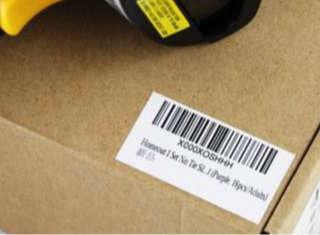FBA LCL Quote
FBA 40HQ FCL Quote
Efficient inventory replenishment is crucial for Amazon FBA (Fulfillment by Amazon) sellers to prevent stockouts, reduce storage costs, and optimize cash flow. This guide breaks down key strategies and processes tailored to different product lifecycle stages, ensuring you stay ahead in managing your FBA inventory.
1. Replenishment Strategy for New Products
New products require careful planning to ensure adequate stock while minimizing overstock risks.
Sales Forecasting
Use metrics like review rate and average reviews to estimate future sales.
Calculation formula:
Reorder Quantity = (Lead Time + FBA Inbound Time + Inventory Receiving Time) × 30-Day Average Daily Sales – In-Transit Inventory – Current Inventory
Example
Daily sales: 30 units
Lead time: 10 days
FBA inbound and receiving time: 25 days
In-transit inventory: 300 units
Current inventory: 450 units
Required Order = (10 + 25) × 30 – 300 – 450 = 300 units
2. Replenishment Strategy for Growth Stage
During the growth stage, it is essential to maintain consistent inventory levels to support increasing sales while accounting for market fluctuations.
Average Sales Monitoring
Maintain at least one month's inventory on hand.
Regularly review sales trends and adjust forecasts to avoid overestimating demand.
3. Replenishment Strategy for Maturity Stage
In the maturity stage, the focus shifts to balancing inventory levels to minimize storage costs while preventing stockouts.
Cost Control with "Just-in-Time" Shipping
Implement a "small but frequent" replenishment approach.
Ship weekly using sea freight, aligning shipment quantities with one week’s sales volume.
Aim to keep FBA inventory levels above 50 days of supply.
4. Replenishment Workflow
Inventory Data Management
Download Inventory and Sales Reports:
Pull data from Amazon's backend, though this can be time-intensive with a large number of SKUs.Leverage ERP Systems (e.g., WIMOOR ERP):
Automating calculations and streamlining processes saves time and improves accuracy.
Key Features of ERP Systems:
Inventory and Order Management: Seamlessly track and manage products, purchase orders, and storage.
Smart Procurement: Automatically calculate replenishment needs for multiple stores and marketplaces.
Shipping Optimization: Plan shipments to prevent stockouts and reduce warehousing fees.
Real-Time Inventory Monitoring: Minimize excess storage costs while improving cash flow.
5. Steps to Create an FBA Shipment
Upload Product Information: Choose the FBA fulfillment option in your Amazon seller account.
Select Amazon Barcode: Convert to Amazon-standard barcodes for inventory.
Provide Dangerous Goods Information: Fill in hazard details if applicable.
Set Shipping Address and Packaging Details: Define your shipment destination and packing type.
Create Shipment and Input Packing Information: Include quantities, weights, and dimensions.
Print and Attach Labels: Ensure boxes are labeled correctly before shipping.
6. Advantages of Using ERP Tools
ERP systems enhance the replenishment process by automating and simplifying complex workflows.
Benefits:
Automation: Sync directly with Amazon’s backend, eliminating the need for frequent manual logins.
Dynamic Calculations: Auto-generate replenishment suggestions based on real-time sales data.
Open Source and Scalability: Systems like WIMOOR ERP offer open-source versions, enabling modular upgrades and commercial use.
Conclusion
By following these steps and leveraging the strategies outlined above, Amazon sellers can streamline their FBA inventory replenishment process, minimize risks of stockouts, control storage costs, and optimize cash flow. Whether you’re managing new products, navigating growth stages, or optimizing mature SKUs, an effective inventory strategy ensures long-term success on the Amazon platform.
FAQs
How can I calculate the right amount of inventory to reorder?
Use this formula: (Lead Time + FBA Inbound Time + Receiving Time) × Daily Sales – In-Transit – Current Inventory.
What is the best way to handle inventory during peak sales periods?
Use an ERP system to monitor real-time sales and automate replenishment suggestions for seamless restocking.
How do ERP tools help with FBA inventory management?
ERP tools automate calculations, optimize shipments, reduce storage costs, and ensure inventory balance.



